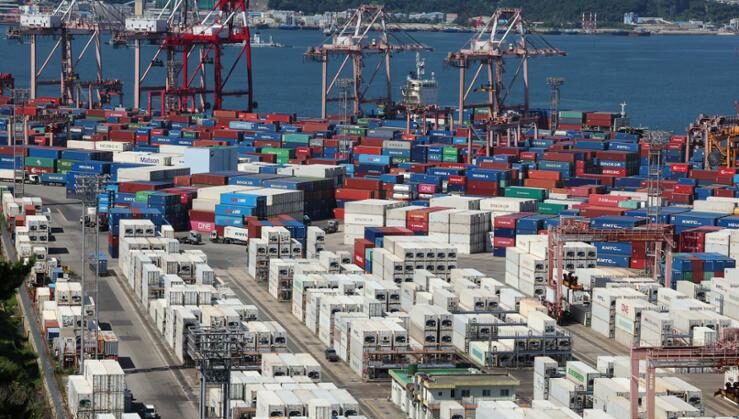WNAM REPORT: Korea achieved its largest current account surplus in almost seven years last month, fueled by strong exports of semiconductors and other major products, according to the Bank of Korea (BOK), Wednesday.
Preliminary data on the global current account balance, the broadest measure of cross-border trade, revealed that Korea posted a surplus of $12.26 billion in June, the BOK said.
The figure exceeded the $8.92 billion surplus set in May and was the largest since September 2017, when the surplus amounted to $12.34 billion.
As a result, Korea’s cumulative current account surplus for the first six months of this year reached $37.73 billion, a significant increase from the $1.15 billion surplus set during the same period in 2023.
The January-June surplus exceeded the Bank of Korea’s estimate of $27.9 billion. The central bank projects that the surplus for the second half of the year will reach $32.1 billion and that the annual surplus will surpass $60 billion.
The higher-than-expected surplus is attributed to Korea’s trade balance remaining positive since April 2023.
The trade surplus for goods reached $11.47 billion in June, an increase from $8.75 billion in May.
In June, exports increased by 8.7 percent year-over-year to $58.82 billion, while imports decreased by 5.7 percent to $47.35 billion.
In particular, exports have continued to rise for the ninth consecutive month as of June, driven by increased overseas demand for semiconductors, mobile devices, petroleum products, and other items.
Outbound shipments of semiconductors surged by 50.4 percent year-on-year. Mobile devices and petroleum product exports also saw increases, rising by 26 percent and 8.5 percent, respectively.
The central bank expects the surplus to persist as the global recovery in the manufacturing sector continues to boost exports.
“The U.S. economy, possibilities of an AI investment slowdown, the monetary policies of major economies and geopolitical risks such as the U.S. presidential election and the conflict in the Middle East are adding to uncertainties,” Song Jae-chang, head of financial statistics at the BOK said.
Regarding concerns about the potential impact of a U.S. recession on Korea’s current account, Song said it is premature to anticipate a slump based solely on job and manufacturing indices.
“We should consider additional economic indicators and corporate performance reports that have yet to be released,” he added.
He added that, despite uncertainties in their revenue models, major U.S. tech firms have indicated they will continue investing, which should support the ongoing positive trend in chip exports.
Meanwhile, Korea’s service account deficit amounted to $1.62 billion in June, widening from a $1.29 billion shortfall in May.
The service account deficit was largely attributable to a travel deficit, driven by pent-up demand for overseas tourism.
The primary income account, which includes monthly salaries and investment income, reached a surplus of $2.69 billion, driven by increased dividend income from overseas.
The dividend income account posted a surplus of $2.34 billion in June, up from $1.13 billion in May.
The financial account, which tracks cross-border capital flows excluding transactions in goods and services, showed a net outflow of $12.24 billion in June.
Overseas direct investments by domestic residents increased by $4.89 billion, while foreign direct investments shrank by $370 million.


